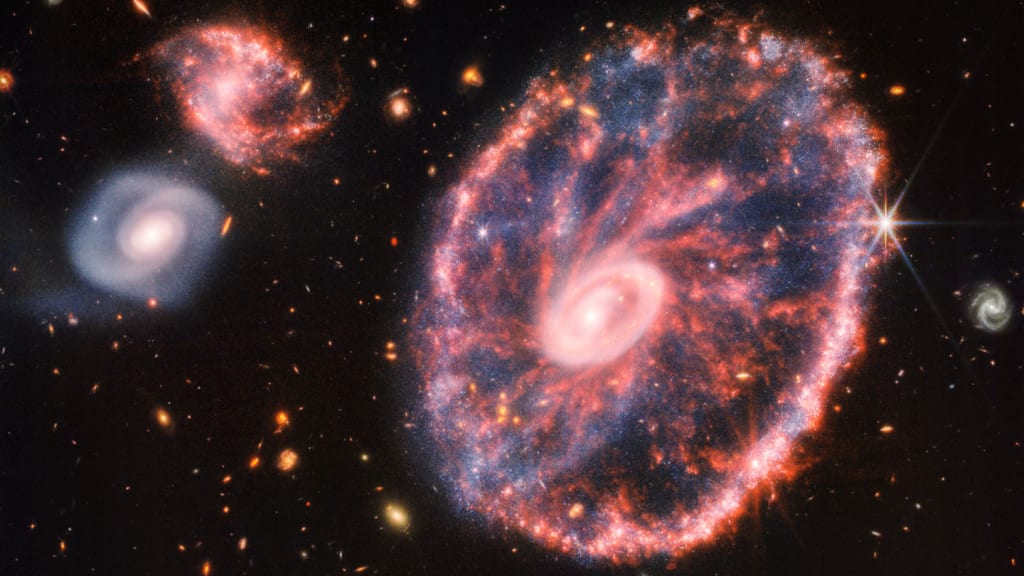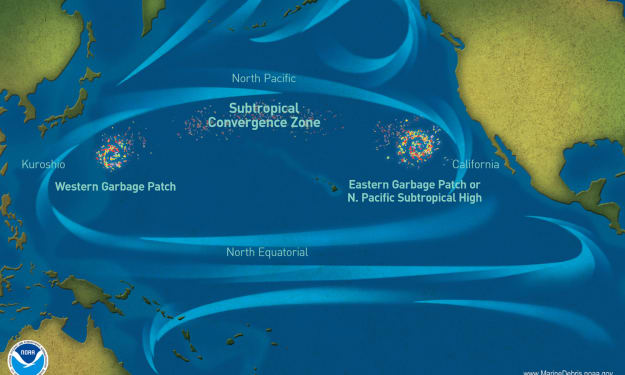The Big Bang May Not Be The Only Truth
New images from James Web Space Telescope may provide information never before thought possible

A groundbreaking development has come to light as the James Webb Space Telescope (JWST) has unveiled new information that is compelling scientists to ponder. The new images from the JWST challenge the Big Bang Theory. Let me be clear; I’m not suggesting the Big Bang theory is incorrect. Take Newton's laws, for example; he formulated laws of motion and gravity. Then we found out, wait a minute, if there's a high gravity source, Newton's Laws fail, or if you're moving really fast—say faster than a running horse or whatever Newton might have experienced in his life—his equations begin to break down. That doesn’t mean you throw away all of Newton's work. So, when Einstein came up with the laws of motion, his special theory of relativity added a new law of gravity. His general theory of relativity doesn’t just replace Newton's law. It expands the applicability of Newton's Laws, drawing a bigger circle around their reach. Newton's laws apply to a point; then, Einstein's laws take over for the rest of the universe. We are moving closer to the day where we can explore the last vestiges of matter that experienced the Big Bang. After that, all information coming to us about the Big Bang ceases, a point where Einstein's law would have reached its limits. From there, we have no data set, and at that point, you're at the edge of the singularity theory on which the Big Bang is based. Beyond that, everything becomes increasingly speculative. These speculations are based on data assuming equations remain valid under conditions far beyond where they've been tested, much like Einstein did with Newton. What the JWST is discovering may bring about new laws that follow Einstein.
To sum it up, the Big Bang Theory posits that at the very beginning of the universe, all matter and energy were compressed into an extremely tiny and highly concentrated point known as a singularity. It was compressed to such an extent that the density reached an infinitely high value. Then, it exploded, and the universe embarked on a journey of expansion and inflation. This process occurred over the course of approximately 13.7 billion years, shaping the universe as we know it today.
The surprising nature of the images captured by the James Webb Space Telescope has challenged scientists' understanding of the universe's origins, conflicting with the Big Bang hypothesis, which has long been regarded as an unquestionable truth by the majority of cosmological theorists. The JWST has revealed new galaxies that appear to be excessively smooth and remarkably ancient.
At first glance, the images of the new galaxies taken by the JWST are absolutely breathtaking. One can see hundreds of galaxies all in the same frame, and the sheer power captured in these photos is undeniable. That's how things appear to me and the average person. For researchers, however, it's the total opposite; these pictures are surprising, to say the least. They don't align with what scientists thought they would see based on their theories. In fact, they're witnessing way more galaxies than expected, and these galaxies differ in some surprising ways—they're smoother than imagined and remarkably old.
These surprises are causing a bit of confusion. The galaxies look nothing like what they're supposed to. The JWST observations indicate the presence of galaxies that appear to be unexpectedly old, challenging the expected timeline of galaxy formation and evolution within the framework of the Big Bang Theory. Additionally, the abundance of observed galaxies is significantly higher than anticipated by the hypothesis.
The Big Bang hypothesis predicts a specific distribution and density of galaxies based on the expansion and evolution of the universe, but the JWST images show a massive number of galaxies, raising questions about the accuracy of the predictions made by the hypothesis. Also unexpected is the smoothness of these galaxies.
The Big Bang Theory suggests that galaxies should exhibit irregularities and variations in their structures. As tiny galaxies grow and evolve into larger galaxies, irregularities in their structures should be apparent. If you think about individual galaxies as 1-inch-long toy cars colliding with numerous other toy cars, gaining size and growing into full-size SUVs, with each collision, you're not going to get a smooth transition.They don't just melt together and become one. You would end up with something like a junkyard Transformer, with bits and pieces sticking out, as the pieces were not originally meant to be together.
This is what the Big Bang theorists themselves anticipated observing—the mangled and scrambled look of galaxies due to multiple collisions. However, the JWST images present a different story. Instead of chaotic and disheveled galaxies, these images unveil overwhelmingly smooth discs and well-organized spiral forms. This unexpected observation challenges the notion that mergers are a common process in the evolution of galaxies because it's clear that these galaxies haven't gone through any of the hardships that you'd normally expect if you were following the Big Bang Theory.
The JWST is also equipped with filters that allow it to capture images in the infrared part of the spectrum. With that, astronomers can study the colors of distant galaxies a lot easier than ever before. By analyzing these colors, they can estimate the ages of the stars within these galaxies. Young, hot stars emit blue light, while older, cooler stars like our sun emit yellow or red light. A star's lifespan and its ultimate fate are determined by its mass—more massive stars burn through their fuel more quickly and may only live a few million years, whereas less massive stars, like our sun, use their fuel more slowly and persist for around 10 billion years or so. This helps determine the age. According to the Big Bang Theory, the most distant galaxies captured by the JWST should depict a snapshot of the universe around 400 to 500 million years after its origin. However, a significant issue arises as some of these galaxies exhibit stellar populations that are already over a billion years old. This poses a considerable challenge. If the Big Bang Theory isn't entirely accurate, how could the universe have formed? There are actually a few theories that could explain the entire phenomenon.
One of them is the concept of Eternal Inflation, which introduces the idea that our universe is just a single component within a much larger Multiverse. This multiverse consists of numerous bubble universes, each with its own unique set of physical laws and properties, resulting in a vast collection of diverse universes all existing simultaneously. This concept has been widely popularized through movies but still remains a possibility.
Another theory is the Steady State Theory, which is one of the most popular ones. It proposes an alternative explanation for the nature and origin of the universe. According to this theory, the universe is in a perpetual and unchanging state, meaning it has existed forever and will continue to exist indefinitely. Unlike the Big Bang Theory, which suggests a point where the universe began, the Steady State Theory posits that it's always been there. One of the key aspects of the Steady State Theory is the concept of continuous creation, meaning that matter is constantly being created throughout the universe to compensate for the apparent expansion of space. In other words, as galaxies and other celestial objects move away from each other, new matter is continuously generated to fill in the gaps and maintain a consistent density of matter in the universe.
This idea of continuous creation serves as a way to explain the observed expansion of the universe without the need for a singular event. There are many things that we don’t yet know, things that don't add up. Based on the current scientific literature, the Big Bang Theory is associated with 16 incorrect predictions and only one accurate prediction.
It's all mind-boggling to think about and these are just a few examples of the numerous contradictions challenging the Big Bang Theory. I couldn't include all the details or honestly comprehend some of them. But the information is available if you're interested.
Now, you would think this would be on all the news stations, yet you don't see anything. There's logic behind this. The majority of people cling to ideas and things they have been told to be the only truth, not willing to expand their thought process and consider the possibility of growth. Again, remember, I'm not saying the earth is flat and Einstein was wrong. What I'm saying is, science is based on data. At a certain time. As new data is gathered, the old laws still apply; they just get expanded on. Keep an open mind, just as we think about our ancestors who believed the earth was flat. One day, people may look at us the same way, believing the universe has a beginning bang. Only time will tell.
About the Creator
Enjoyed the story? Support the Creator.
Subscribe for free to receive all their stories in your feed. You could also pledge your support or give them a one-off tip, letting them know you appreciate their work.






Comments (1)
You thought about this, nice job.